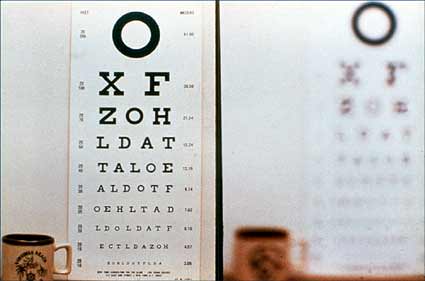Legal Blindness in Lancaster, PA
- Home
- Legal Blindness in Lancaster, PA
Also Serving Patients in Lititz, Elizabethtown, and Mount Joy

If a visual handicap limits vision to 20/200, or one-tenth of normal, a person is legally blind. Legally blind does not mean totally unable to see. Someone legally blind cannot see the line below the second big E at the top of the eye chart. People with 20/20 vision but less than 20 degrees of side vision can also qualify as legally blind. People who see well with only one eye are not considered legally blind, nor are people who wear glasses to see better than 20/200.
Many legally blind people function quite well, especially if they have been visually handicapped since childhood. Older children and adults with visual handicaps may need magnifying lenses for reading and telescopes for distance viewing. People with very poor vision may need to learn Braille and walk with a seeing-eye dog or a cane.
Young children with visual impairments should have help from a teacher of the visually impaired and should be evaluated for developmental problems by professionals experienced with visual handicaps. Parents may need to be advocates for their child to obtain needed services through the school system.
Visually handicapped people of all ages benefit from social service, occupational therapy, and orientation and mobility training. Many new devices are available to cope with vision loss, including books on audio tapes, scanners that turn print into Braille, watches that can be “read” with the fingers, and talking computers and calculators.


